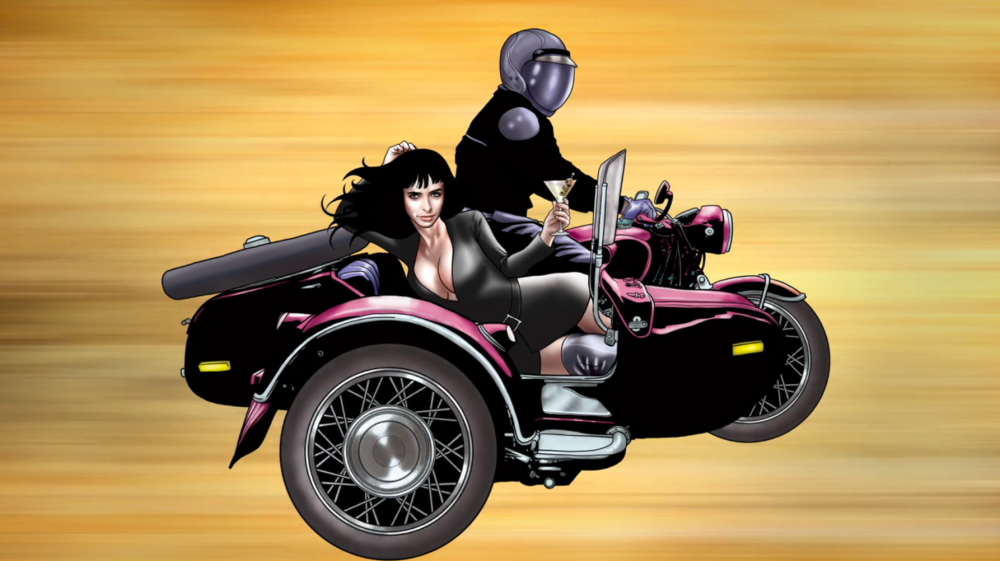It may come as a surprise that Krysten Ritter’s portrayal of Alias‘ Jessica Jones was in fact not her first portrayal of a comic book character… and not even her first one to appear on Netflix. Don’t Trust the B— in Apartment 23, a short-lived ABC sitcom, follows the life of Ritter’s outrageous character Chloe as she flounces about Manhattan. Although the series had little to do with comic books for its two seasons, one particular episode may have answered a major question about the screen to print gap and the role comic books may play.


Ritter’s character is featured in a graphic novel popular in Japan called Shitagi Nashi. The episode’s plot revolves around her relationship with the fandom, but a number of comic book/action sequence hybrids create a level of depth and specialized portrayal that is somehow quite familiar. Something one might even liken to the experience of reading a comic book.
W.J.T. Mitchell writes in Comics as Media: “As media, comics are more like cinema and the computer, capable of remediating every other medium” (p 259). This is a difficult concept to grasp for some. If you are a formal literature reader or a harsh realist, it is easy to see comic book creations as little more than elevated picture books. But the worlds they can create somehow seem to jump off of the page. The scenes become all encompassing and the written portions become almost audible. Suddenly, one can find themselves feeling quite literally in the middle of the action–enjoying what may seem like a movie, but because of the undivided attention necessary for reading can feel like much more.
How exactly is this bizarre effect achieved in a film format by this unsuccessful sitcom? And what exactly did it entail? The description just provided has three major elements that create the comic book effect.
- All encompassing visual scenes
- Almost audible written components
- Undivided attention from the reader
- Bright, colorful graphics are displayed on the screen as they might appear in a comic book, but subtle motion and implied depth is added to the surrounding world–animating it slightly and bringing the two dimensional creation much closer to a real life scene. The imagination when reading a comic book as well as the pace of the fast dialogue seems to create this same reaction in readers.
- In terms of audio, the typically written words of a comic are spoken aloud by a narrator and force the resulting effect quite bluntly.
- But how is that sense of undivided attention achieved? The short answer is that it is not. (You may note that the beginning of this post commented that this episode may have helped bridge the gap in replicating the comic book effect, but not entirely nailed it.) As you watch the notably short sequences of comics within the TV show, it is still very much possible as a viewer to lose your attention on the screen, room, and world around you.
Comic books are capable of fully engrossing a reader because they demand full commitment to be enjoyed–having readers follow the action continuously by participating in its progress. If the reader doesn’t read, the action can’t continue. It is for this reason that comic books exist as a transmedium, successfully bridging the gap between film and print.
I really like the stipulation you make at the end of the post: because comics that have been adapted to screen (whether it be TV, movies, or anything else) necessarily progress without the reader’s direct involvement, they are in some ways weaker than their printed counterpart (which ask more of the person experiencing them.) You reminded me of McLuhan’s theory of “hot” and “cold” media, which I believe you were drawing from.
But here’s a question for you: if this difference will make or break comics on the screen, what could we do to re-engage screen audiences? My first thought is something like Deadpool, where the titular character (in print, or on screen) breaks the fourth wall to directly involve the reader or viewer. But this seems like a gimmick that could run out its usefulness quickly.
LikeLike